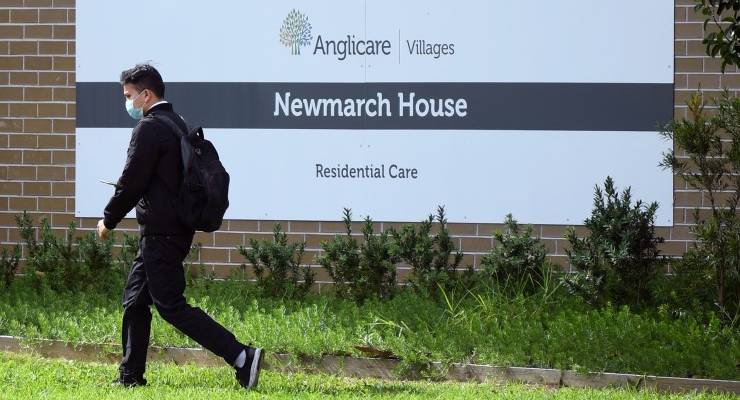
In years to come, the report on the Newmarch House COVID-19 outbreak, by Professor Lyn Gilbert and adjunct professor Alan Lilly, should be a must-read for any bureaucrat — not merely those in the health sector.
It demonstrates how careful planning, strong oversight, stakeholder engagement and strong commitments to achieving commonly agreed goals can count for nothing in the face of a relentless enemy.
It should particularly be required reading for bureaucrats with a passion for meetings. The reviewers’ discussion of the incessant meetings that involved Anglicare, its managers on-site at Newmarch House and the plethora of state and federal agencies and providers that were involved involved is startling. It’s worth quoting at length:
Anglicare and Newmarch House managers were increasingly burdened by requests for information arising from frequent daily teleconferences … On-site managers and staff were overwhelmed by the pressure of providing care and unable to provide regular reports to residents’ relatives or gather the information requested. Anglicare managers, who participated in these teleconferences, reported frustration about conflicting advice from different agencies and the lack of clarity about the hierarchy of authority. Teleconference participants failed to identify themselves or the agency they represented and no minutes or action items were distributed to confirm or clarify the information or actions required.
The meetings served to confirm the rule of thumb that the more people in a meeting, the less likely anything will result from it. For the overwhelmed managers and staff on the ground in Newmarch House, it became less and less clear who exactly was in charge, a lack of clarity that …
… was exacerbated by the fact that the daily interagency meetings were conducted by teleconference … The meetings were often not conducive to the collaboration required to work through and address issues in a timely and considered manner. The daily meeting schedule during the outbreak was onerous and included site meetings, interagency briefings and Anglicare’s crisis management team meetings. Many staff reflected on the significant amount of time required to prepare for meetings and respond to requests for additional information … A further challenge was the number of government agencies involved … The lack of clarity about the function of each agency and where it sat in the hierarchy of decision-making added confusion.
External agencies also swamped Newmarch House managers with demands for information. “There were frequent competing demands from external agencies for information and updates on the outbreak and residents’ status, which created further stress for on-site managers,” the reviewers found.
The problem was only properly resolved after the Aged Care Quality and Safety Commission — the supposed regulator of the facility, and one of the many participants in the constant teleconferences — came off the sidelines and told Anglicare to insert a management team from BaptistCare into Newmarch House. That team had had experience dealing with the previous Sydney outbreak at Dorothy Henderson Lodge. They commenced on April 24, and immediately began turning things around at the facility.
But that was 13 days after the outbreak. By April 26, 52 people had been infected. The death toll would eventually reach 19. It was not a tragedy that occurred hidden away, beyond the eyes of the government or officialdom. They were front and centre every day.
It is unlikely that a mass casualty event in Australia has ever had the dubious benefit of so many meetings being conducted about it while it was unfolding.
Most people working in a large organisation will be familiar with such onslaughts of meetings. But the Newmarch House debacle represented the application of standard bureaucratic inefficiency to a life-and-death crisis, with no one able, or willing, to take charge for days on end.
The problem was exacerbated by the way residential aged care sits in relation to the health system — it is both home and healthcare facility, but not fully either, and it is regulated by the Commonwealth, but heavily involved with state government services.
The Aged Care Quality and Safety Commission believes in light-touch regulation — avoiding unannounced inspections, placing the onus of ensuring third party providers meet aged care standards on providers, protecting the reputations of facilities that have failed to comply with infection controls — and has no capacity to fill gaps in care. That is left to the likes of private providers like Aspen Medical and the labour hire platform Mable.
It also means ultimate responsibility for the tragedy that unfolded at Newmarch House is diffuse and unclear — lost in the system like a dropped-out line or a pixelated image in an endless, pointless teleconference.








Well at least Senator Colbeck didn’t keep bothering them for updates.
I assumed that the relentless enemy of decent aged care was the federal government.
Face the facts, Bureaucracies don’t like old people.
Management structures imposed by Governments in relation to Nursing Homes is often refered to as the Nappy Style of Management. Like incontinence, as long as you have your arse covered and there is minimal leakage it has the desired outcome. ie No shit!
if everyone has a toke no-one can nark..